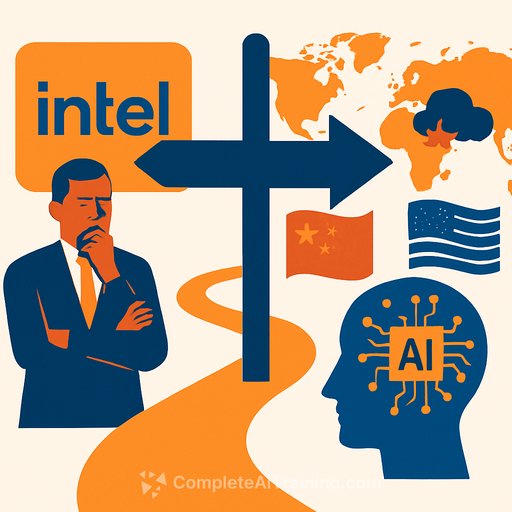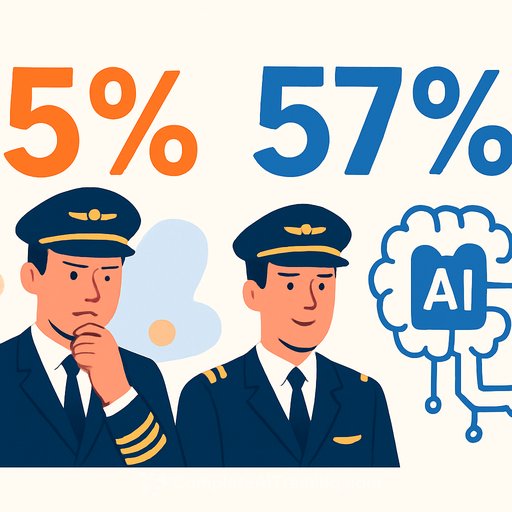Intel's Leadership Crisis and Strategic Crossroads in the AI Era
Summary Overview
- Intel faces a leadership crisis as CEO Pat Gelsinger exits amid a 61% stock drop and political scrutiny over interim CEO Lip-Bu Tan's connections to Chinese startups.
- The board proposes spinning off the Foundry business to enhance U.S. security competitiveness against TSMC, despite regulatory and investor challenges.
- A $10 billion cost-cutting plan, including a 15% workforce reduction, prioritizes short-term stability over R&D, risking Intel’s leadership in AI innovation.
- Geopolitical tensions between the U.S. and China present dual threats as Intel balances CHIPS Act subsidies with dependence on TSMC manufacturing.
- Investors weigh restructuring potential against leadership instability, with shares down 30% since 2024 amid uncertain positioning in the AI market.
Intel's current situation highlights the collision of corporate governance issues, geopolitical strategies, and the urgent need to adapt to AI-driven growth. With internal tensions and external pressures mounting, the company stands at a significant strategic crossroads.
Boardroom Tensions and Political Scrutiny
Pat Gelsinger’s departure in late 2024 marked a critical turning point for Intel. His exit followed a 61% stock decline since 2021 and underperformance that shook investor confidence. The appointment of Lip-Bu Tan as interim CEO in March 2025 quickly became controversial.
Former President Donald Trump publicly called for Tan’s resignation, citing Tan’s alleged connections to Chinese semiconductor startups. This political intervention caused Intel shares to drop 5% in premarket trading, reflecting the heightened scrutiny on corporate leadership in sectors tied to national security.
Adding to the pressure, some former Intel board members, including Barbara Hackman Barshefsky and John Plummer, have pushed for a Foundry spin-off. Their rationale is to strengthen U.S. security and better compete with TSMC. However, they face regulatory obstacles and investor wariness about such a major restructuring.
Strategic Shifts and Financial Realities
Lip-Bu Tan’s leadership emphasizes fiscal discipline. The announced $10 billion cost-cutting plan includes a 15% reduction in workforce and suspending dividend payments. While these moves aim to stabilize finances, they also hint at stepping back from aggressive R&D investments.
Intel has halted expansion projects in Europe and slowed factory construction in the U.S. This raises concerns about the company’s ability to keep pace with AI chip innovation. The financial impact is clear, with a $16.6 billion quarterly loss reported in October 2024 and a $3.17 billion operating loss in Q2 2025.
This financial strain reflects challenges competing with NVIDIA, which leads the AI chip market thanks to its strong software ecosystem and rapid innovation cycles.
Geopolitical Pressures and Supply-Chain Realignment
Intel’s challenges are deeply connected to U.S.-China tech tensions. Despite receiving $19.5 billion in CHIPS Act subsidies aimed at boosting domestic production, Intel still relies on TSMC for advanced manufacturing nodes beyond 18A.
Tan has openly acknowledged the possibility of outsourcing certain manufacturing processes to TSMC, highlighting a paradox: U.S. policy pushes for semiconductor independence, yet TSMC remains the most advanced and cost-effective foundry.
Meanwhile, China’s drive for semiconductor self-sufficiency and the U.S. proposal for 100% tariffs on imported chips add pressure. Intel must juggle these geopolitical risks while supplying critical technology to U.S. defense and tech sectors.
The company’s focus on AI PCs and 18A node development presents a potential lifeline, but execution risks are significant.
Risks and Opportunities for Investors
Intel’s stock has been volatile, down roughly 30% since early 2024. The company’s ability to execute cost reductions, regain process leadership, and secure a position in the AI chip market will determine its future.
However, political and geopolitical risks remain high. Leadership uncertainty and supply-chain vulnerabilities complicate the outlook. The proposed Foundry spin-off could unlock value if it aligns with U.S. national security goals and allows focused competition globally.
Investors should watch how CHIPS Act funding affects Intel’s capital spending and talent acquisition in AI and advanced manufacturing.
Investment Advice
A cautious approach is recommended. Intel’s restructuring and AI initiatives offer long-term potential, but near-term risks make it a high-beta investment. Those with a longer horizon might consider a modest position, hedged within broader semiconductor exposure.
Alternatively, companies like TSMC or ASML, which face fewer U.S. political risks, may provide more stability.
Intel’s situation reflects broader semiconductor industry challenges in aligning national security priorities with maintaining technological competitiveness. Executives and strategists should weigh patience, risk management, and geopolitical developments carefully when considering Intel’s path forward.
Your membership also unlocks:






